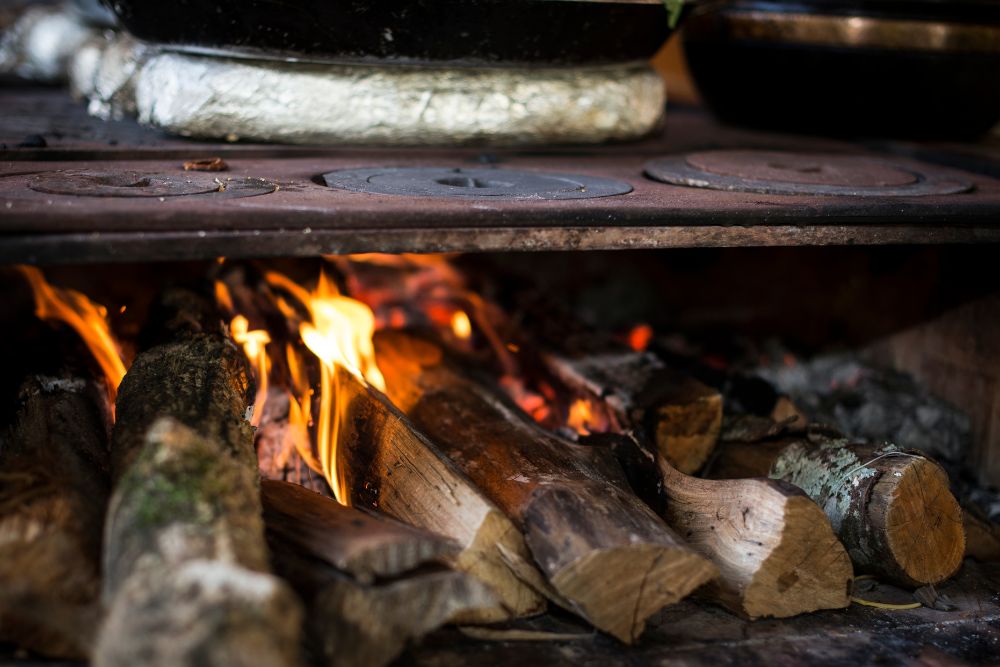Pros and Cons of Using a Wood-Burning Stove
Wood-burning stoves have served as a traditional home-heating option for hundreds of years. They provide warmth and comfort, along with an inviting rustic aesthetic. In recent years, there has been renewed interest in wood stoves by those pursuing a path to off-grid living or energy independence and those who want a cozy element during long winter months.
Wood stoves obviously provide many advantages, but they also have some unique challenges. This article discusses the pros and cons of using a wood-burning stove for you to decide if it makes sense for your home and lifestyle.
|
|
Pros of Using a Wood-Burning Stove
1. Effective and Powerful Heating
Wood stoves can certainly produce the most intense, radiant heat of all heating sources. They can warm a room quickly and can keep a comfortable temperature even in extremely cold weather. Wood stoves produce much less CO2 than other heating sources, when maintained properly and newer model wood stoves are even more efficient.
2. Removes Energy Dependence
With a wood-burning stove it eliminates the need for electricity or gas. This is particularly important, especially for off-grid living or remote rural areas. Wood stoves are an excellent way to heat homes during power outages caused by ice storms and blizzards as they provide a heat source independent of the power grid.
3. Utility Savings
If you have a source of free or inexpensive firewood, heating solely with a wood-burning stove can provide saving to heating bills and can help to dramatically reduce your utility bills. Over time, your utility savings can offset the cost of the stove itself.
4. “Green” or Eco-Friendly
When firewood is harvested sustainably, it can be considered a renewable resource. When approached with discretion, wood stoves can be prospective eco-friendly options. Current EPA-certified models provide reduced emissions compared to older models, and are somewhat low-carbon heating options.
5. Sets a Cozy Environment
A wood fire provides warm light to enjoy, a soothing crackle of sound, and a comforting warmth. It has a house-feel, charm and rustic vibe. A bit of flavor, enhancing rustic living or more comfortable living spaces such as a family room or cabin.
6. Great for Out-of-the-Way Places
A wood stove needs neither electricity nor a gas line, and is a perfect option for remote cabins and homesteads with unreliable or no infrastructure needing its service.
7. Can Cook
Some models of wood stoves can have stove tops to cook on, even bake in. Great in emergencies if you cannot access kitchens well, also if you want to be rustic in your cooking.
8. Invest in the Long-term
A wood stove can last a very long time with care and some maintenance once in a while. They last years, making them worthwhile in any home for nicer home warmth and charm.
Cons of Wood-Burning Stoves
1. Regular Maintenance
To continue to use your wood stove, keep it clean. Wood stoves also need related to their use regularly because they will accumulate soot, and be a fire hazard if not cleared. Chimney inspections should happen at least once a year.
2. Firewood Storage and Transport/Use
You will need safe dry space for firewood storage and every day you will need to haul firewood into a safe dry space for use. Taking care of firewood is labour-intensive and it always has to occur. It will certainly not appeal to everybody.
3. Not a Whole-House Heating Solution
Wood stoves will typically heat a room or zone. The only way to better distribute warmth it to create a fan or ducting system to heat other spots indoors.
4. Quality of Air and Emission Issues
Although technology is better today at creating better emissions with wood-burning, it still introduces fine particles unrelated to the units design itself, to everything else inside a house for air quality. A poorly ventilated wood stove will create an indoor polluter in an already, can, have adverse claims on potentially dangerous intents for air quality. To persons with breathing issues this alone would recommend alternate heat uses.
5. Initial Cost and Installation
Installing a wood stove is going to require upfront costs to purchase a wood stove and chimney and hearth and pay someone to install it. Relating to their use and setup, the costs may vary based on regulations in your area.
6. Safety Risks
Home use can lead to chimney fires, as an air hazard. Accidental carbon monoxide build-ups, or making it too easy, dangerous burns, exist to users that are careless or neglectful. Specifically in households with little children, or with pets, you have to consider relevant safety equipment if you were planning to just use the
7. Time and Work
Starting a fire and maintaining a fire, and cleaning after should not take little time. Depending a lifestyle, fire is a more hands on way of providing heat when you want it!
8. Local Restrictions
Regulations exist in many municipalities that specifically directed at or related to wood-burning and air quality issues. Before even considering purchasing and installing a wood stove you definitely want to check local codes and regulations.
Conclusion
A wood-burning stove is a very dependable, economical, and aesthetic way to heat your home, especially if you value independence and rustic decoration, but it does come with its drawbacks, some of which have some regular commitment tied to them, as well as effort, and related safety issues.
After you consider all the advantages and drawbacks when thinking about the costs of having a wood-burning stove again you need to see if the reality of your living space, lifestyle, and the health of the environment around you fit in well with installing a wood stove. In the right circumstances a wood-burning stove can be a practical centerpiece of your home, and still tug at your heartstrings.

